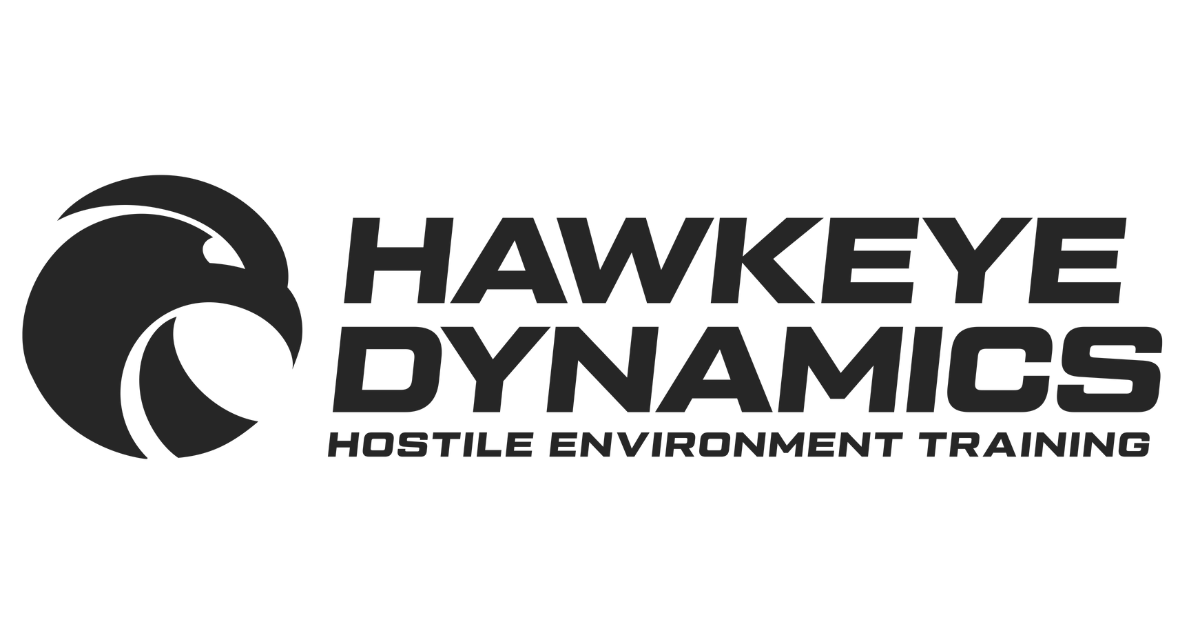Medical evacuations for employees travelling abroad can cost between $32,000 and $38,000 USD.
Business travel exposes your staff to various risks that substantially affect their safety and well-being. Natural disasters, security threats, health risks, and political unrest can disrupt travel plans and put your employees at risk without proper measures. A typical three-day international business trip costs more than $5,000 USD. Protecting your investment becomes as vital as safeguarding your people.
Travel risk management stands as an essential element for modern organisations that take duty of care in business travel seriously. This systematic process helps predict potential threats during your employee’s travel experiences. It also helps you achieve your legal duty of care obligations for company travellers.
A well-laid-out travel risk management programme protects your organisation and its employees effectively. Many companies don’t deal very well with implementing effective systems because of unclear policies, poor monitoring, and weak crisis response capabilities.
This article will help explain how companies can improve travel safety for employees, and also help you identify common gaps in your current approach. You’ll learn how to build a travel risk management program that prepares your organisation for any business travel situation. Risk managers, HR professionals, and operations leaders will find practical strategies to develop a TRM system that lines up with their broader risk management and business continuity plans.
If you’d like to download a free checklist to assess your organisation’s current ‘risk maturity’ levels, then click the button below to download the Travel Risk Readiness Checklist.
Common Gaps in Company Travel Risk Management

Recent research reveals a startling fact – only 24% of organisations have robust Travel Risk Management (TRM) programmes that meet ISO 31030 standards. This gap puts both employees and companies at risk. Let’s get into the biggest weak spots in how companies handle travel risks.
Lack of a clear corporate travel policy
The numbers paint a concerning picture. Four in ten businesses don’t have any travel policy at all. What’s more troubling is that 60% of business travellers can’t make sense of why these policies exist. This creates a mess around booking trips, managing expenses, and following safety rules.
The gaps in current policies tell an even more worrying story:
- A mere 12% tackle traveller safety issues
- All but one of these policies skip over extra fees like checked bags
- Not a single policy mentions mobile apps or digital tools
Employees make risky and expensive travel choices without proper guidelines.
No immediate tracking or monitoring
The world grows more unpredictable each day, yet many organisations can’t keep tabs on their travelling staff or spot potential dangers. Good TRM needs quick information to make safe travel decisions.
Companies that can’t track their people or spot emerging threats leave their staff exposed. The absence of automatic alerts about transport issues, civil unrest, or health crises forces travellers to handle dangerous situations on their own.
Poor crisis response and communication
Only three in ten companies check on their employees after security or medical issues during business trips. It gets worse – 45% offer zero support after trips. Staff members end up lost during emergencies without clear protocols or communication plans.
Crisis response plans often miss crucial details about decision-makers and specific steps to take. So when things go wrong, the delayed response puts travellers at risk.
Inconsistent training for employees
Organisations must do more than just hand out travel policies. Their people need to understand risks and know what to do in emergencies. All the same, many companies skip traveller training completely.
The training problems run deep. Staff members don’t get enough prep for risky destinations or cultural awareness training. They also lack practise with emergency procedures. Without proper training, travellers can’t spot dangers or make smart choices when unexpected problems pop up on the road.
Core Elements of a Strong TRM Programme

A resilient travel risk management programme needs key components that work together seamlessly. Let’s look at four vital elements needed to make a TRM framework work.
1. Creating a travel policy for employees
Travel policies are the foundations of any TRM programme. Your policy should spell out booking procedures, expense guidelines, and approval workflows. The policy must address regional restrictions, emergency protocols, and business travellers’ incident reporting methods. Employee portals or business messaging tools should make the policy available to ensure everyone sees it.
2. Risk assessment and disclosure processes
Organisations must set up a well-laid-out framework to evaluate traveller safety before any business trip. This assessment should get into threats like political instability, natural disasters, endemic diseases, crime rates, and entry requirements. Each traveller’s personal profile matters when determining risk levels – including medical conditions, gender, and religion.
3. Emergency assistance and escalation plans
Your TRM programme needs clear protocols for crisis situations. Employees should know their contact points and support access options during travel incidents. This section must detail reporting procedures and the organisation’s support measures. Professional solutions like 24/7 customer care services help provide immediate assistance to travellers in distress.
4. Training for travellers and travel risk managers
Complete training builds the foundation of any successful TRM programme. Travel managers need specialised courses that cover key principles like those found in ISO 31030. Travellers, in turn, should receive pre-trip training on emergency procedures, health and safety protocols, and destination-specific information.
For high-risk destinations, additional preparation is essential. This includes Hostile Environment Awareness Training (HEAT), cyber security awareness, first aid, and other targeted safety and security training tailored to the threats they may face on the ground. These trainings not only reduce risk but also empower travellers to respond confidently under pressure.
These four elements create a framework that protects your organisation and travelling employees. The Travel Risk Management Framework Online Course provides practical tools and knowledge to build or boost your travel risk management programme.
Building a Scalable and Compliant TRM System

Image Source: International SOS
Your core TRM elements need a system that grows with your organisation and stays compliant with industry standards.
Choosing the right travel risk management software
Good TRM software should track locations and monitor threats live to keep travelling employees safe. The best platforms send automatic notifications about current and future travel spots with safety briefings before trips. Top solutions let you “sync itineraries and travel plans automatically from any travel system”. This gives you a full picture of where your employees are. Your software needs mobile apps that put “the power of a real-time travel risk management programme” right in your travellers’ hands.
Working with travel risk management companies
Most organisations can’t match the expertise of specialist TRM providers. These companies have “vast global networks of partners, contacts, and resources”. This helps them handle complex situations well. They give you “24/7 assistance, ensuring that help is just a phone call away, regardless of location or timezone”. They also create “ISO 31030-compliant travel risk management programmes” that fit your needs.
Ensuring compliance with ISO travel risk management standards
ISO 31030:2021 gives you a “best practise framework that helps organisations evaluate and manage their travel risks effectively”. The standard includes “policy development, programme implementation, threat identification, risk assessment and prevention strategies”. Your compliance builds “a culture where travel-related risk is taken seriously”. It also boosts “employee confidence in travel-related health, safety and security arrangements”.
Documenting and auditing your TRM processes
A detailed paper trail makes your TRM system easy to audit. Your audit documents should be “prepared in sufficient detail to provide a clear understanding of its purpose, source, and the conclusions reached”. Regular reviews and feedback from returned travellers help spot “issues and/or opportunities to further strengthen your travel risk policies”.
Future-Proofing Your Organisation’s Travel Safety

Business travel keeps changing faster than ever, and organisations must fine-tune their travel risk management approach. Your TRM strategy should grow with your business to tackle new threats.
Using data to improve your travel risk management system
Practical information drives successful TRM. Your team can prevent future issues by collecting and analysing travel incident data. Many organisations don’t track key metrics properly – only 19% track travel near-misses. Recording details about visited destinations, incidents, and response success helps identify patterns. Your approach can be adjusted based on these analytical insights.
Lining up TRM with business continuity and ESG goals
TRM works best when combined with broader business continuity plans and sustainability objectives. This includes aligning with Environmental, Social, and Governance (ESG) goals, which help organisations measure their ethical impact and long-term resilience. Integrating TRM into these frameworks creates consistency across risk systems and strengthens operational readiness. Traveller welfare is also becoming a key part of corporate social responsibility. A reliable TRM programme reinforces your organisation’s ethical commitments and reputation.
Why you need a corporate travel policy that evolves
The ever-changing world of business makes static policies obsolete quickly. Your travel policy needs regular reviews each year to handle new risks and meet traveller expectations. A continuous improvement cycle helps you learn from incidents. You can adapt to regulatory changes and accept new ideas that make travellers safer.
How an online course can help you build a TRM framework
Structured learning gives organisations great ways to develop detailed travel risk management skills. The Travel Risk Management Framework Online Course teaches you how to develop policies, assess risks, and create response protocols that meet international standards. Through clear explanations, examples, and practical tools, the course helps you build a flexible, working TRM programme tailored to your organisation’s needs.
Conclusion

Travel risk management is a vital part of protecting employees and business interests. This articles explores how proper TRM keeps travelling staff safe while meeting your legal duty of care obligations.
It takes careful planning to grow your TRM system with the right software and expert partners. This organised method will give a documented process that holds up during audits and follows ISO 31030 standards.
Without doubt, the business travel world keeps changing, and your TRM strategy must adapt. Data-driven improvements are the foundations of future-ready travel risk management. These work with broader business plans and updated policies to protect your people, reputation, and profits.
TRM is not just about following rules – call it a key investment in making your organisation stronger. A well-laid-out programme cuts down on expensive evacuations and travel problems. Your employees will feel supported during their business trips.
You might have simple travel policies now or no formal TRM programme at all. Taking steps to improve your approach brings better duty of care compliance, lower risks, and more confident travellers. The Travel Risk Management Framework Online Course shows you how to build these skills. It gives you tools and knowledge to protect your most valuable assets—your people—wherever business takes them.
References
https://www.linkedin.com/pulse/business-travel-policy-current-trends-challenges-taxivaxi-t93bf
https://www.industryweek.com/the-economy/article/21947358/failing-to-update-your-travel-policy-is-risky-business
https://www.travelperk.com/guides/corporate-travel-safety/travel-risk-management-program/
https://www.bcdtravel.com/blog/organizations-may-be-overlooking-key-guide-for-managing-travel-risk/
http://learn.internationalsos.com/Training-Modules
https://www.concur.com/blog/article/8-corporate-travel-policy-best-practices
https://www.internationalsosfoundation.org/training/iso-31030
https://www.alertmedia.com/products/travel-risk-management
https://worldtravelprotection.com/travel-insights/why-work-with-a-travel-risk-management-company/
https://www.crisis24.com/solutions/travel-risk-management
https://www.bsigroup.com/en-US/products-and-services/standards/iso-31030-travel-risk-management/
https://www.internationalsos.com/magazine/understanding-the-new-iso-31030-standard
https://pcaobus.org/oversight/standards/auditing-standards/details/AS1215
https://worldtravelprotection.com/travel-insights/steps-to-build-strong-travel-risk-manaegment-program/
https://drj.com/wp-content/uploads/2019/08/Travel-Risk-Management-Best-Practices-WorldAware-043019.pdf
https://teplis.com/blog/perfecting-corporate-travel-risk-management/
https://www.globalguardian.com/global-digest/travel-risk-management
https://executiveprotectionblog.com/2024/10/corporate-travel-risk-management-program/
https://www.everbridge.com/newsroom/article/everbridge-research-finds-only-one-quarter-of-surveyed-organizations-have-solid-travel-risk-management-program/



Leave a Reply